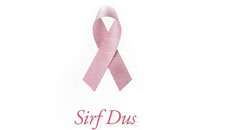People may hold a prejudice against those with facial paralysis simply because they cannot communicate in the universal language of facial expression, says a study.
People with facial paralysis experience stigma, showed the findings of the study that the important role the face plays in everyday communication.
"People are more wary and more likely to form a negative impression of someone with a disability," said Kathleen Bogart, an assistant professor of psychology at the Oregon State University.
"Identifying that stigma is the first step to addressing it," Bogart added.
Some basic facial expressions, including the smile, are communicated universally across cultures.
But people with facial paralysis or other facial movement disorders may not be able to participate in that communication because they lack emotional expression and may seem unresponsive in social situations.
For the study, about 120 participants, none of whom had facial paralysis, watched or listened to videos of people with varying degrees of facial paralysis and were asked to rate the subject's emotions as the person recounted happy or sad experiences.
Those with severe facial paralysis were rated as less happy than those with milder facial paralysis across different communication types.
Those with severe facial paralysis were also rated as less sad than those with milder facial paralysis.
The study also found that people often rely on a combination of communication channels to perceive emotions.
"That is important because people with facial paralysis can adapt other communication channels, such as tone of voice or gestures, to enhance their communication ability," Bogart said.
The study appeared in the journal Basic and Applied Social Psychology.






